Amateur Radio
Communication is a key part of storm chasing and this is especially true if there are a few people in a group chasing together. There are many communication tools in today’s world ranging from cell phones to unlicensed FRS walkie-talkies but the best means of communication for storm chasing is ham radio because it works when cell phones don’t and the quality and range of communication is far superior to FRS/GMRS and CB.
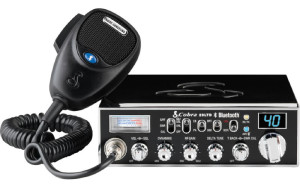
All amateur radio operators across the globe require a license. In Canada, a basic license will get you privileges above 30 MHz, that means you’ll be able to use all the standard VHF/UHF equipment. I have both my basic+advanced with full privileges except morse code, so I’m able to operate in any of the allocated HAM radio bands.
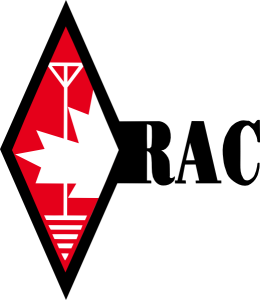
For storm chasing, all my HAM radio gear is considered mobile equipment. This means, these are radios that are specifically designed to be mounted in a vehicle and operate off the vehicles battery power which is typically in the 11.5 to 14.4 voltage range. Mobile radios typically also have quick keys and features on the microphone and radio face plate which makes operating them easier than a normal base station radio would be.
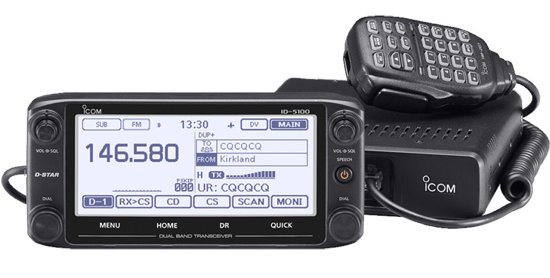
Most storm chasing communication occurs in the 2-meter VHF spectrum between 144 and 148 MHZ. In North America 146.550 is often the primary FM simplex channel used, with 146.490 and 146.580 being two other alternative channels. Another channel, 146.520 is the FM calling frequency, this is reserved for making contact or calling out for someone to respond. After contact is made it’s standard practice to move to another frequency/channel.
The reason 2-meters is considered the band of choice for mobile communication in rural environments is because vehicle mounted antennas don’t have to be overly large to work efficiently, the noise floor is relative low and you don’t need a very good ground plane to “ground” or anchor the antenna. As you get lower in frequency the noise floor rises, antennas get bigger and the ground plane becomes more and more important. As you get higher in frequency the radio waves become smaller requiring smaller antennas, and the noise floor drops but there is a trade-off. For one, high-frequency radio waves (1.8MHz – 30 MHz) typically have better ground propagation than very high frequency waves meaning that a signal on 50Mhz will in theory travel further through hilly terrain and trees than a signal of the same strength at 145MHz and an ultra high frequency signal at 450MHz will preform even more poorly.
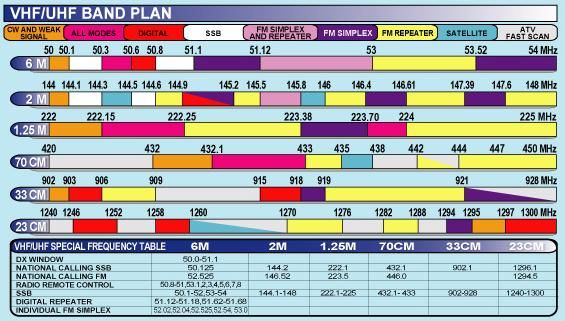
This is all in theory of course. The problem is that a 10 meter or 6 meter radio wave requires a big vehicle mounted antenna. A quarter-wave antenna on 10-meters / 29MHz needs to be ~3.5 meters tall, and for 6-meters / 52 MHz you need a ~1.5 meter tall antenna. Yet, for 2-meters / 146MHz a 1.5 meter tall antenna is 5/8th of the radio wave, so your almost at full size which increases your ability to pull in and receive a signal. When you factor all these real world variables, 2 meters is easily the ideal band which will get you the most range and signal clarity in a rural mobile environment.
One other aspect of HAM radio which makes it perfect for storm chasing is the use of repeaters. Repeaters are basically half-duplex radio systems mounted high up on towers, buildings and even mountains for maximum range. A repeater receives a signal on one frequency and immediately repeats it on another frequency. So if I only had 10 km of range on simplex with a repeater I might be able to get 40 to 100 kilometers of range or more through a repeater.
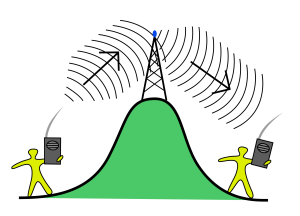
This is why Canwarn and Skywarn nets are hosted on repeaters which cover large areas. These nets are activated during severe weather and allow spotters and chasers to relay important information to the net control station who can then directly send it to the proper weather office so a watch or warning can be issued, etc.

In my vehice I have two radios, the first of which is a Yaesu FT-9800R. This radio is a quad-band unit covering 10, 6, 2 and 70 centimeters which basically gives me access to all the parts of the HAM radio spectrum where FM is used. It also has crossband repeat, dual-receive and transmit plus 700 memory channels. I’ve put every repeater for the province of Ontario in this radio and have state zones I load in while storm chasing in the U.S and other places. It’s basically my core radio for repeaters and whatever else I might need. However I don’t typically use it for simplex communication.

My second radio is the real workhorse which I use religiously for chaser to chaser communication. It’s the Icom V8000 which boasts a whopping 75 watts of power and is tuned to minimize noise. It’s a mono-band radio meaning it only supports 1 band (VHF 2-meters) but that’s fine, with a good high gain antenna this radio can go the distance and the audio is super clean. Despite supporting a whopping 75 watts it also has low power modes and I’ll often only need to use it with a meager 2.5 watts running into a high-gain 5/8th whip antenna to get the job done. That said, when I do need 75 watts, it delivers without hesitation powering through whatever.

All my antennas are trunk-lip body mounts. I would use magnetic mount antennas in the past but they would sometimes blow off in high winds, scratch the paint or create other problems. Often they were not sealed well and rain would creep in destroying the coupling system. With trunk-lip mounts the antennas are always firmly in place, well grounded and I’ve not had any corrosion issues. For the FT-9800 I use a quad band antenna called the CR-9800 made by Diamond and for the Icom V8000 I use a Comet 5/8th whip which I’ve cut and tuned. When chasing in tornado alley I also sport a CB radio and put on a trunk-lip mounted K40 antenna to use with it.
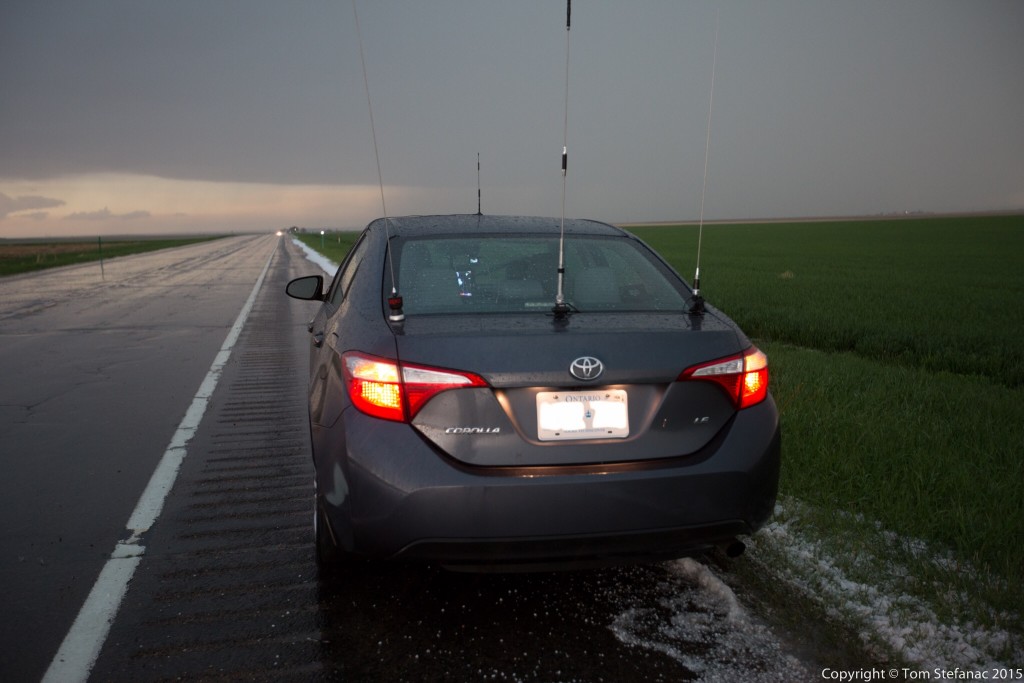
My most recent acquisitions have been a portable DMR radio, TYT-MD380, and two D-star Icom units, ID-51A Plus and Icom 5100A. There is currently a shift occurring in amateur radio where traditional FM signals are being replaced by a growing number of digital voice modes.
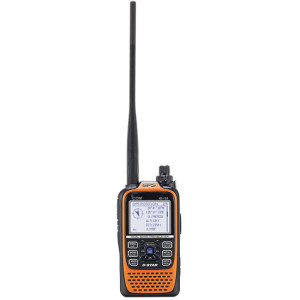
Digital-voice radios are nothing new, in fact they’ve been around for years (think cell phones) and many amateur radio enthusiasts have been using them. The first widespread non-cellular digital systems were commercial iDEN networks followed by NXDN, Apco-P25 and many others. All of these systems were commercial in nature and meant amateurs were usually buying used commercial gear.
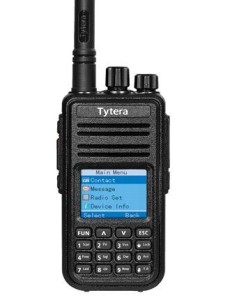
Digital voice radio is just like FM, except instead of an analog signal being sent out where noise such as static and natural artifacts interfere, digital modes use codecs like MP3’s or other digital mediums to store information. The radio receives this digital signal and puts it back together into something audible. All digital radio codecs are lossy in that they lose information as radio signals become weak, noisy and degrade but the microprocessor in the radio uses error correction logarithms and the like to put the audio signal back together.
In some cases digital voice signals can be received much farther away than FM signals with near perfect audio quality thanks to amazing error correcting technology.
Today D-Star (ambe codec) is the primary digital voice radio system used in amateur radio followed by DMR/MotoTrbo. D-star is really geared for amateur use but unfortunately only Icom is the current major manufacturer. DMR radio is a commercial digital system, but you need to buy a commercial radio to use it and it can’t be easily programmed on the fly. In the not too distant future FM will likely be completely replaced with digital-voice modes and one mode will likely dominate but until then I have capability in all the modes to remain compatible with everyone and everything!